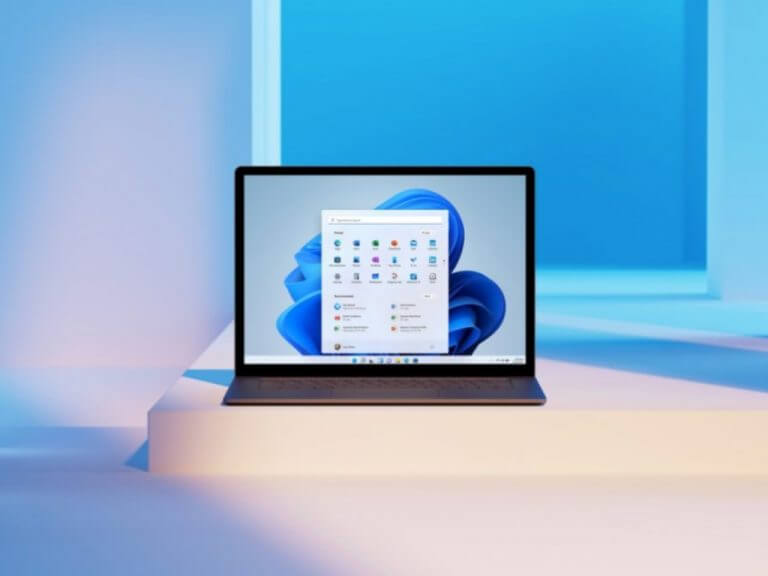Despite a global chip shortage that choked sales growth of PCs that could ship with Windows, and an ongoing pandemic that’s stalled future cloud migration business decisions, Microsoft managed to beat investor estimates again for its first quarter of 2022 fiscal earnings report.
According to Microsoft’s FY22 Q1 earnings report, the company surpassed forecast to hit $45.3 billion in revenue and $20.5 billion in net income earned. The massive financial sweep for the quarter represents a 22 percent increase in revenue growth and a 48 percent increase in net income for the quarter in year over comparisons.
Some of the highlights for Microsoft’s Q1 for 2022 include a surprising 10 percent growth in Windows OEM revenue, even after taking a negative seven-point hit from Windows 11 revenue deferral, gaming revenue growth of 16 percent despite rumors of missed Game Pass subscription goals and lastly, Search and News advertising revenue traffic acquisition growth of 40 percent.
In not so bright news, Microsoft’s Surface revenue declined once again from the heights of its close to $2 billion quarter, down another 17 percent for FY22 Q1.
Microsoft’s bread and butter revenue horses, Intelligent Cloud and Productivity and Business Processes sectors continue to output strong increases for the quarter with both Office Commercial and consumer up 18 and 10 percent respectively as well as 31 percent revenue growth for Azure despite strong competition from Google Cloud and AWS.
For more details and context, below are the investor’s notes:
Productivity and Business Processes
Revenue increased $2.7 billion or 22%.
- Office Commercial products and cloud services revenue increased $1.4 billion or 18%. Office 365 Commercial revenue grew 23% driven by seat growth, up 17% with continued momentum in small and medium business and frontline worker offerings, and higher revenue per user. Office Commercial products revenue declined 13% driven by continued customer shift to cloud offerings, on a low prior year comparable impacted by a slowdown in transactional licensing.
- Office Consumer products and cloud services revenue increased $135 million or 10% driven by Microsoft 365 Consumer subscription revenue, on a strong prior year comparable. Microsoft 365 Consumer subscribers increased 19% to 54.1 million.
- LinkedIn revenue increased $930 million or 42% driven by advertising demand in our Marketing Solutions business and an improving job market in our Talent Solutions business.
- Dynamics products and cloud services revenue increased 31% driven by Dynamics 365 growth of 48%.
Operating income increased $1.9 billion or 33%.
- Gross margin increased $2.2 billion or 22% driven by growth in Office 365 Commercial and LinkedIn. Gross margin percentage increased slightly. Excluding the impact of the change in accounting estimate, gross margin percentage increased 2 points, driven by improvement across all cloud services.
- Operating expenses increased $290 million or 7% driven by investments in cloud engineering and LinkedIn.
Intelligent Cloud
Revenue increased $4.0 billion or 31%.
- Server products and cloud services revenue increased $3.9 billion or 35% driven by Azure and other cloud services. Azure and other cloud services revenue grew 50% driven by growth in our consumption-based services. Server products revenue increased 14% driven by hybrid solutions, including Windows Server and SQL Server running in multi-cloud environments, with an increase in multi-year agreements that carry higher in-quarter revenue recognition, on a low prior year comparable impacted by a slowdown in transactional licensing.
- Enterprise Services revenue increased $154 million or 9% driven by growth in Microsoft Consulting Services and Enterprise Support Services.
Operating income increased $2.1 billion or 39%.
- Gross margin increased $2.6 billion or 28% driven by growth in Azure and other cloud services. Gross margin percentage decreased. Excluding the impact of the change in accounting estimate, gross margin percentage increased 2 points, driven by gross margin percentage improvement in Azure and other cloud services, offset in part by sales mix shift to Azure and other cloud services.
- Operating expenses increased $496 million or 13% driven by investments in Azure and other cloud services.
More Personal Computing
Revenue increased $1.5 billion or 12%.
- Windows revenue increased $525 million or 10% driven by growth in Windows OEM and Windows Commercial. Windows OEM revenue increased 10%, including 7 points of negative impact from the Windows 11 revenue deferral, driven by growth in the PC market, particularly in commercial with higher revenue per license. Windows Commercial products and cloud services revenue increased 12% driven by demand for Microsoft 365.
- Search and news advertising revenue increased $713 million or 37%. Search and news advertising revenue excluding traffic acquisition costs increased 40% driven by higher revenue per search, on a low prior year comparable.
- Gaming revenue increased $501 million or 16% driven by growth in Xbox hardware. Xbox hardware revenue increased 166% driven by higher volume and price of consoles sold due to continued demand for Xbox Series X|S, on a low prior year comparable impacted by a slowdown in volume of consoles sold ahead of Xbox Series X|S launches. Xbox content and services revenue increased 2% driven by growth in Xbox Game Pass subscriptions and first-party titles, offset in part by a decline in third-party titles, on a strong prior year comparable that benefitted from stay-at-home scenarios.
- Surface revenue decreased $267 million or 17% on a strong prior year comparable.
Operating income increased $347 million or 7%.
- Gross margin increased $718 million or 10% driven by growth in Windows and Search and news advertising. Gross margin percentage decreased driven by sales mix shift to Gaming hardware.
- Operating expenses increased $371 million or 15% driven by investments in Gaming as well as Windows marketing.
Per usual, Microsoft is warning investors of some future-impact situations that will weigh on the stock in the coming months
- intense competition in all of our markets that may lead to lower revenue or operating margins;
- increasing focus on cloud-based services presenting execution and competitive risks;
- significant investments in products and services that may not achieve expected returns;
- acquisitions, joint ventures, and strategic alliances that may have an adverse effect on our business;
- impairment of goodwill or amortizable intangible assets causing a significant charge to earnings;
- cyberattacks and security vulnerabilities that could lead to reduced revenue, increased costs, liability claims, or harm to our reputation or competitive position;
- disclosure and misuse of personal data that could cause liability and harm to our reputation;
- the possibility that we may not be able to protect information stored in our products and services from use by others;
- abuse of our advertising or social platforms that may harm our reputation or user engagement;
- the development of the internet of things presenting security, privacy, and execution risks;
- issues about the use of artificial intelligence in our offerings that may result in competitive harm, legal liability, or reputational harm;
- excessive outages, data losses, and disruptions of our online services if we fail to maintain an adequate operations infrastructure;
- quality or supply problems;
- government litigation and regulatory activity relating to competition rules that may limit how we design and market our products;
- potential consequences under trade, anti-corruption, and other laws resulting from our global operations;
- laws and regulations relating to the handling of personal data that may impede the adoption of our services or result in increased costs, legal claims, fines, or reputational damage;
- claims against us that may result in adverse outcomes in legal disputes;
- uncertainties relating to our business with government customers;
- additional tax liabilities;
- the possibility that we may fail to protect our source code;
- legal changes, our evolving business model, piracy, and other factors may decrease the value of our intellectual property;
- claims that Microsoft has infringed the intellectual property rights of others;
- damage to our reputation or our brands that may harm our business and operating results;
- adverse economic or market conditions that may harm our business;
- catastrophic events or geo-political conditions, such as the COVID-19 pandemic, that may disrupt our business;
- exposure to increased economic and operational uncertainties from operating a global business, including the effects of foreign currency exchange and
- the dependence of our business on our ability to attract and retain talented employees.





